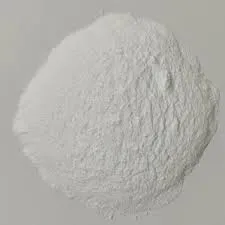What Are Additives in Plastics?
Plastics have become an integral part of our daily lives, used in a wide range of applications from packaging and construction to automotive and electronics. While the base material of plastic can vary, what truly makes plastics versatile and functional are the additives that are mixed with the raw polymer. These additives enhance certain properties, improve processing, and ultimately determine the performance of the final product. In this article, we will explore the types of additives commonly used in plastics, their functions, and their significance in the plastic industry.
Types of Additives
1. Stabilizers One of the primary functions of additives is to enhance the stability of plastics against environmental factors such as UV radiation, heat, and oxidation. Common stabilizers include UV absorbers and antioxidants. For instance, without appropriate UV stabilizers, plastics can degrade when exposed to sunlight, leading to discoloration and loss of mechanical strength.
2. Plasticizers These additives increase the flexibility and workability of rigid plastics. Plasticizers, such as phthalates, are often used in polyvinyl chloride (PVC) products to make them softer and more pliable. While plasticizers enhance performance, concerns over health effects, particularly with some phthalates, have prompted a search for safer alternatives.
3. Fillers Fillers are materials added to plastics to improve mechanical properties or reduce costs. They can enhance strength, reduce weight, or modify transparency. Common fillers include talc, calcium carbonate, and glass fibers. For instance, adding fiberglass to resin can significantly improve the material’s tensile strength, making it ideal for use in automotive parts.
4. Colorants Colorants, including dyes and pigments, are used to impart color to plastic products. The choice of colorant is crucial, as it must be compatible with the polymer matrix and stable during the intended use. Colorants can also affect other properties of the plastic, such as transparency and heat resistance.
5. Flame Retardants In applications where fire safety is paramount, flame retardants are critical additives in plastics. They help reduce the flammability of materials, making them less likely to ignite. Commonly used flame retardants include brominated and phosphorus-based compounds. However, the safety of some flame retardants is under scrutiny, leading to regulatory changes and greater emphasis on safer alternatives.
what is additives in plastics

6. Antimicrobial Agents These additives are incorporated to prevent the growth of bacteria, mold, and fungi on plastic surfaces. This is especially important in applications such as food packaging and medical devices, where hygiene and safety are crucial.
7. Processing Aids Additives like lubricants and surfactants can improve the flow properties of plastics during processing, making it easier to mold or extrude the materials. They help reduce friction and prevent sticking during fabrication, allowing for a smoother manufacturing process.
The Significance of Additives
The addition of these various additives is crucial for the tailored performance of plastic materials. Each additive serves a specific function and can dramatically alter the properties of the base polymer. For manufacturers, understanding the right combination of additives is essential for optimizing production processes and meeting the specific needs of various applications.
Moreover, the growing environmental and health concerns surrounding certain additives have prompted significant research into the development of more sustainable alternatives. Biodegradable plastics and non-toxic additives are gaining traction as industries shift toward more eco-friendly practices.
Conclusion
Additives play a vital role in the plastic industry, enhancing the functionality, durability, and safety of plastic products. They allow manufacturers to tailor materials for specific applications while addressing the challenges posed by environmental factors and safety regulations. As technology advances and consumer preferences evolve, the landscape of plastic additives will continue to change, contributing to an increasingly sustainable future for this indispensable material. Understanding the role of these additives not only enriches our knowledge of plastics but also informs better choices in the design and usage of plastic products in our everyday lives.

